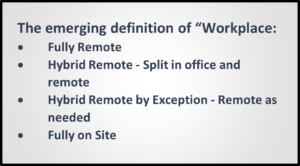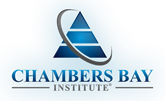
by Jim Solomon and Bruce LaRue, Ph.D.
If you and your organization, no matter the industry or sector, are not addressing top talent retention as a priority, your competition will pass you by. Today’s best organizations are investing heavily into attracting and retaining top talent even before we fully emerge from the COVID-Pandemic era.
Most employees spend more waking hours at work than at “home”, whether the workplace is remote or an on-the-job site. This makes it vital to make our “workplace” somewhere that people want to come to learn, grow, develop healthy relationships, and build their future. If we fail to create a culture that attracts, develops, and retains top talent, our best people will be the first ones to leave.
The lesson here is, regularly rehire your best people, keep them engaged, show genuine interest in their future goals and their passions. Provide avenues for them to grow and develop their skills. Mentor and coach them in a way that you would want to be mentored and coached yourself. Help them to align their passions and interests with the direction the organization is moving. Tie rewards and recognition to this and ensure that their goals remain aligned with those of the organization. This creates a win for your organization, for your personnel, and for your customers.
This is underscored by George Randle, Head of Global Talent Acquisition at Forcepoint, Managing Partner at EF Overwatch, and Best-Selling Author of The Talent War – “The top candidates or the A-Players, want the ability to IMPACT, they want to be EMPOWERED, drive CHANGE and drive RESULTS. They are looking for a boss that is dedicated to investing in their career.”
The role of leaders today is to ensure their team is cohesive, that it can collaborate across space, time, and organization boundaries to align behind mission priorities while requiring less direct supervision.
This is exactly how Integrator Leaders operate. They ensure that their distributive teams have a clear understanding of their vision and intent, self-organize, and adapt behind mission priorities. This allows teams to be agile and to rapidly adapt to change. It allows them to meet customer’s routine or special requirements, sustaining a high level of customer satisfaction. And it is critical to retaining the best in your organization.
Top Talent Expectations of Leadership
Top talent is watching and taking notice. If asked, your best employees would tell you that as some expectations may be changing, many key cultures and practices remain non-negotiable – mutual trust, meaningful work, open communications with the boss, a culture of feedback, team collaboration, recognition, and workplace safety.
There is an expectation from top talent for leadership to regularly communicate by sharing their organization’s story. How is the organization doing today, are they on azimuth with its vision, where are the gaps and how are these being addressed, and what does the future look like? As you prepare to respond, you must do so through the lens of the employee, your customers, and the organization. Each of these perspectives collectively will provide the transparent insight expected of your high producers.
Employees don’t want to be left alone, yet they don’t want to be micromanaged. An inclusive team culture becomes more important with teams working remotely. The expectation is to have collaborative teams that have access to and use the latest collaboration tools.
Career advancement and how leaders are supportive of this remains important. Evelina Nedlund suggests that “Internal mobility should also be top of mind to companies today. Our data shows that after three years, someone who was promoted has a 70% chance of still being at the company, while someone who moved laterally has a 62% chance. By comparison, an employee who stays in their same position has only a 45% chance of still being at that company after three years. By making internal mobility a top priority now, companies will be set up for long-term success.” And after a long, demanding year, working through the challenges brought by the pandemic, this message is magnified even more so.
Leaders must be open to receiving and providing feedback and available to listen. Employees want their leaders to set clear expectations and hold all members of their team accountable. They expect their boss to have their back to feel secure, permitting them to take risk to achieve success. For their efforts, workers want to be recognized.
Top Talent Expectations of Workplace
As a result of the pandemic and the shift for a large part of the workforce, almost instantaneously becoming remote workers, the entire idea of “where work is performed” has changed. In some industries, remote work has resulted in an increase in productivity. Many leaders are considering converting infrastructure costs to innovative paths for products, services, and new careers.
Today, employers are enticing top talent to join their team by defining the workplace as a hybrid with opportunities for greater employee flexibility of working remotely. Getting a new job, with greater compensation without having to relocate is becoming desirable, causing leadership to rethink their approach to attracting and retaining the highly competitive pool of top talent.
A recent JLL survey revealed that the global workforce expectations are shifting due to COVID-19. The on-line survey results of 2,033 office workers across 10 countries spanning all major industries uncovered interesting trends about the importance of workplace, team, and communications.
Employees feel that the office is the preferred location for some crucial activities. Results exposed that though Work from Home (WFH) or Work from Anywhere (WFA) is desired by most, there is a renewed importance of working in the actual office. Three-quarters of those responding were in favor of having the ability to come into an office, with 24% wanting to work exclusively in the office and 50% preferring a hybrid approach.
A decisive 70% of respondents reported that the office environment is more conducive to connecting with teammates to solve complex issues, as well as managing direct reports and connecting with leadership. However, they found that work-from-home proved to be more efficient for concentration and taking mental breaks.

With respondent’s strong reaction to the value of working in the office, the data reveals that there is a need for leaders to determine changes to increase the workers ability to engage as effectively while WFH or WFA as they feel while working at the onsite office.
It Takes Top Leadership to Retain Top Talent
People don’t quit the company – they quit their boss! And this doesn’t necessarily mean that the boss is a jerk; it means that individuals simply may not feel important to the organization in a meaningful way. Today’s workers want to be part of the changes that affect them. They want a place where they can learn, grow, and develop their skills. They want to be involved in consequential work that will make an impact.
From the best leaders we work with, we see a pattern from their feedback about retention of top talent. The resounding response is that as a leader today, failing to do any one of the practices listed below, puts you and your organization at risk of losing your best people to your competition:
- Know your people
- Care about your people
- Challenge your people
- Take time to listen, be open to feedback
- Empower, and hold all accountable
- Provide opportunities for career advancement
- “Rehire” each employee regularly
Retention in today’s rapidly changing world requires a leader’s full attention and demands for them to be on the top of their game. It takes top leadership to retain top talent!

You must be logged in to post a comment.